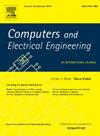增强型 IEEE 9 总线互联电力系统 LFC 中电网成形 (GFM) 逆变器的渗透与控制
IF 4
3区 计算机科学
Q1 COMPUTER SCIENCE, HARDWARE & ARCHITECTURE
引用次数: 0
摘要
负载频率控制(LFC)可实现频率稳定和控制区域之间的电力流动平衡。随着可再生能源的不断增加,逆变器正成为现代电网中的重要资产。随着这些基于逆变器的资源的普及,系统惯性减小,从而导致潜在的频率不稳定问题。成网型(GFM)逆变器的开发和应用因其能够维持优质电网运行而备受青睐。GFM 逆变器作为电压源转换器,通过部分负载变化来调整输出频率,从而减少频率偏差。本研究为 GFM 实现了虚拟同步发电机(VSG)控制机制。在 MATLAB-Simulink® 中开发了一个模拟增强型 IEEE 9 总线系统的双区互联电力系统模型,并进行了仿真分析。在拟议的 LFC-GFM 系统的每个 LFC 和 GFM 环路中都应用了二级控制器,并采用磁性细菌优化 (MBO) 算法来同时调整这些参数。通过比较不同逆变器渗透水平下的模拟结果和基本 LFC 系统,验证了所提出的控制策略的有效性。模拟动态响应验证了 GFM 逆变器受控穿透在拟议的 LFC-GFM 系统中的有效性,该系统具有更强的阻尼特性,改善了小信号稳定性,并将沉降时间缩短了 43.46%,频率偏差减少了 55.5%。本文章由计算机程序翻译,如有差异,请以英文原文为准。
Penetration and control of grid-forming (GFM) inverter in LFC of an enhanced IEEE 9-Bus interconnected power system
Load-frequency-control (LFC) is employed for frequency stability and balanced power flow among control-areas. Inverters are becoming critical assets in modern power networks with increasing renewable energy. As these inverter-based resources prevail, the system inertia decreases, leading to potential frequency instability problems. Grid-forming (GFM) inverter development and applications are gaining significant attraction because of their ability to maintain quality power-grid operations. GFM inverter, acting as a voltage-source-converter, adjusts its output frequency by contributing a portion of the load change to reduce the frequency deviations. The virtual synchronous generator (VSG) control mechanism for GFM is implemented in this work. A two-area interconnected power system model emulating an enhanced IEEE 9-Bus system is developed and simulated in MATLAB-Simulink® for analysis. Secondary controllers are applied in each LFC and GFM-loop of the proposed LFC-GFM system with a magnetotactic-bacteria-optimization (MBO) algorithm for simultaneously tuning these parameters. The proposed control strategy’s effectiveness is verified by comparing simulation results with the basic LFC system under varying inverter penetration levels. The simulated dynamic responses verify the efficacy of the controlled penetration of the GFM inverter in the proposed LFC-GFM system with enhanced damping characteristics, improving small-signal stability and reducing settling time by 43.46% and frequency deviation by 55.5%.
求助全文
通过发布文献求助,成功后即可免费获取论文全文。
去求助
来源期刊

Computers & Electrical Engineering
工程技术-工程:电子与电气
CiteScore
9.20
自引率
7.00%
发文量
661
审稿时长
47 days
期刊介绍:
The impact of computers has nowhere been more revolutionary than in electrical engineering. The design, analysis, and operation of electrical and electronic systems are now dominated by computers, a transformation that has been motivated by the natural ease of interface between computers and electrical systems, and the promise of spectacular improvements in speed and efficiency.
Published since 1973, Computers & Electrical Engineering provides rapid publication of topical research into the integration of computer technology and computational techniques with electrical and electronic systems. The journal publishes papers featuring novel implementations of computers and computational techniques in areas like signal and image processing, high-performance computing, parallel processing, and communications. Special attention will be paid to papers describing innovative architectures, algorithms, and software tools.
 求助内容:
求助内容: 应助结果提醒方式:
应助结果提醒方式:


